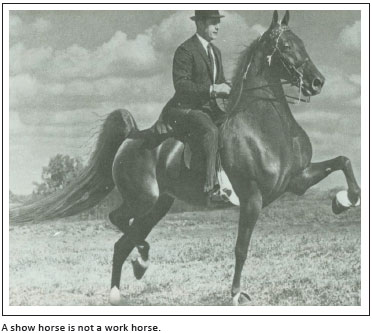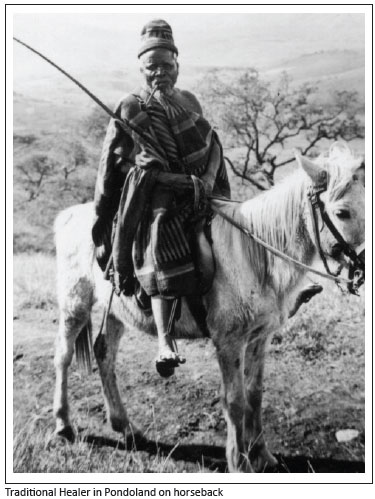Serviços Personalizados
Artigo
Indicadores
Links relacionados
-
 Citado por Google
Citado por Google -
 Similares em Google
Similares em Google
Compartilhar
South African Journal of Science
versão On-line ISSN 1996-7489
versão impressa ISSN 0038-2353
S. Afr. j. sci. vol.107 no.1-2 Pretoria Jan./Fev. 2011
http://dx.doi.org/10.4102/sajs.v107i1/2.495
BOOK REVIEWS
Animal history meets social history: a new look at horses in South African history
Janet Cherry
Development Studies Department, Nelson Mandela Metropolitan University, South Africa
Book Title: Riding high - horses, humans and history in South Africa
Book Cover:

Author: Sandra Swart
ISBN: 978-1-86814-514-0
Publisher: Wits University Press, Johannesburg, 2010; R200.00*
Sandra Swart's critical and imaginative approach to equine history in South Africa will be considered by some to be long overdue, and is to be welcomed. It is not only horse lovers who will appreciate this history, but all who are interested in the complex intersection of nature with human society and culture. Military and colonial historians will be fascinated by the chapters dealing with the use of horses by the BaSotho in anti-colonial campaigns and by the Boers in the South African War. Historical sociologists will delight in the way in which Swart explores the use of horses in the creation of Afrikaner identity in the 20th century. As someone who has a horse which is a cross between the Boerperd and the American Saddlebred, it was fascinating to read of the competition between the two factions of the Afrikaner community around these two breeds and how they manifested particular class and national aspirations in the apartheid period.
Swart also manages to capture some extraordinary but relatively unknown episodes in the 'equine history' of South Africa: the Donkey Massacre of 1983, the scandal of the Remount Commission of the British in the South African War and the administering of gin and tonic to horses suffering from African horse sickness - all of these make for fascinating reading. She goes beyond the anecdotal, however; for example, in her analysis of the abolition of the horse-based commando system after the Act of Union in 1910. The end of the commandos 'helped trigger a social rebellion predicated on profound socio-political disillusionment and economic alienation'; moreover it is understood as being symbolic of the formation of the modern bureaucratic state in South Africa. Globalisation (in the procurement of horses from around the world for the South African War), the politics of memory (in the building of a horse memorial in Port Elizabeth after the same war) and a gendered analysis of horse ownership are all themes of contemporary importance which Swart applies to the history of horses in South Africa.

The book is a collection of essays rather than a single narrative. This does not detract from its overall coherence, however, and each chapter engaged my interest on different grounds. The only other history of South African horses I have come across is Daphne Child's 1967 Saga of the South African horse, a charming but dated work written from a colonial mindset epitomised in the sentence 'The use of horses vitally affected the course of events in southern Africa, and it made a very great contribution to the conquest of barbarism and the advance of progress at the tip of the Dark Continent'.
By contrast, Swart's book is 'history from below' and a brave attempt to give agency to horses as historical actors and subjects, not simply passive objects of human ambition or aggression. Yet this project is not as easily fulfilled as Swart - or the reader - would like. Histories of women, slaves or colonised peoples are more easily recovered than histories of domestic mammals; horses, although remarkably expressive and communicative animals, have left little in the way of historical record. Their 'voice' is heard only through the records of those humans who valued them and developed relationships of various kinds with them. Swart explores these relationships with sensitivity as well as a broad sociological eye which is never sentimental. She is able to trace the patterns of the impact of horses on human development, and to understand the way in which horses fit into human society's complex classifications of race, place, class, gender and status. Through this process, as Swart writes, 'The once invisible horse simply becomes visible'. Her appropriation of the idea of feminist history (herstory) to the equine worldview (horsetory) is not only amusing, but an exploration of the courageous crossing of boundaries between social and natural science:
An experiment in blurring the genres of history and natural history with an exploratory 'horsetory' of the world is possible. This hippomorphic story would be suffused in the horses' physical pleasure, memory, intense fear, and cyclical seasonality, and strongest traits...It might be a story of grass, foals, blood, sex, pain, fear and food - perhaps mainly food.

Swart's style is generally accessible, although in places she does use arcane or scientific terminology ('neotany', 'telegony', 'the politics of autochthony', 'deploy the horse metonymically') which will require the ordinary reader to pick up a dictionary. But these are minor quibbles: she writes with a light touch, with a delightful sense of humour and with compassion for both equines and humans.
Her claim to presenting an 'environmental history' of horses within the southern African landscape is only partially fulfilled; she is more successful in following the social history tradition of EP Thompson, or South African historians such as Charles van Onselen and William Beinart. Beinart's influence in his integration of social with environmental history is evident; yet while Beinart examined (among many other socio-environmental dynamics) the use of the (alien) prickly pear plant by rural communities in South Africa, Swart has taken on a more complex challenge of describing and analysing the impact of the (alien) horse on the South African landscape. She does this with admirable success.
 Postal address:
Postal address:
PO Box 15879, Emerald Hill 6011, South Africa
email: janet.cherry@nmmu.ac.za
* Book price at time of review














